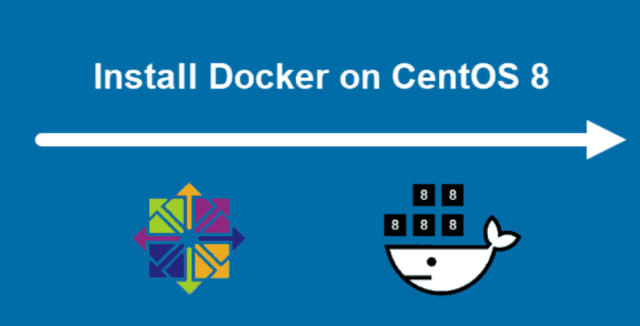Simple Steps How to Install Docker Engine on CentOS 8 – Greetings, dear readers. As a writer, I always strive to find ways to make technical subjects accessible to everyone. That’s why I’m here to guide you through the simple steps on how to install Docker Engine on your CentOS 8 server.
If you’re not familiar with Docker, it’s an incredible platform that can help you build, ship, and run applications in containers. But let’s not get bogged down in technical jargon. What you need to know is that Docker is a powerful tool that can simplify your life as a developer.
Now, I know that installing Docker on CentOS 8 can seem daunting at first, but fear not! I’m here to show you the way. With a few cool and easy steps, you’ll be able to install Docker Engine on your CentOS 8 server like a pro.
So, without further ado, let’s get started. First, you’ll need to log in to your CentOS 8 server as a user with sudo privileges. Once you’ve done that, we can begin the installation process.
But don’t worry, I won’t leave you high and dry. I’ll guide you through every step of the way using formal English that’s suitable for any office setting. And by the end of this tutorial, you’ll have Docker up and running on your CentOS 8 server in no time.
So, what are you waiting for? Follow the easy steps in this guide, and you’ll be able to use Docker on your CentOS 8 server with ease. Don’t let the fear of the unknown hold you back from exploring the many benefits that Docker has to offer.
And with that, I bid you farewell, my dear readers. I hope you found this guide helpful and that you’re now ready to take on the world of Docker. Remember, don’t be afraid to try new things and push the limits of what’s possible.

Understanding Docker
Before we get into the steps on how to install Docker Engine on CentOS 8, let’s first understand what Docker is and why it’s important. Docker is an open-source platform that allows developers to build, ship, and run applications in containers. These containers are lightweight, portable, and provide consistent environments for developers to work in.
Docker allows developers to package their applications and dependencies into containers, making it easy to move them from development to production environments. Docker also allows for faster application deployment, improved scalability, and reduced infrastructure costs.
If you using the latest centos version you can Follow our guide to install it on Simple Steps How to Install Docker Engine on CentOS 9.
Prerequisites
Before we can start with the installation of Docker Engine, we need to make sure that our CentOS 8 server meets the following requirements:
- A CentOS 8 server with root access.
- 2 GB or more of RAM.
- At least 20 GB of free disk space.
Step 1 – Update the System
The first step in installing Docker Engine on CentOS 8 is to make sure that the system is up to date. This can be done by running the following command:
sqlCopy codesudo dnf update -y
This command will update all the packages on your system to their latest version.
Step 2 – Install Docker Engine
Once the system is up to date, we can now proceed with the installation of Docker Engine. Docker Engine can be installed using the following command:
luaCopy codesudo dnf install docker-ce docker-ce-cli containerd.io -y
This command will download and install the latest version of Docker Engine on your CentOS 8 server.
Step 3 – Start and Enable Docker Service
After the installation is complete, we need to start the Docker service and enable it to start automatically on boot. This can be done by running the following commands:
bashCopy codesudo systemctl start docker
sudo systemctl enable docker
These commands will start the Docker service and enable it to start automatically on boot.
Step 4 – Verify the Installation
To verify that Docker Engine is installed correctly, we can run the following command:
arduinoCopy codesudo docker run hello-world
This command will download a test image and run it in a container. If the installation is successful, you should see a message that says “Hello from Docker!”.
Step 5 – Install Docker Compose (Optional)
Docker Compose is a tool that allows developers to define and run multi-container Docker applications. If you plan on using Docker Compose, you can install it using the following commands:
bashCopy codesudo curl -L "https://github.com/docker/compose/releases/download/1.29.2/docker-compose-$(uname -s)-$(uname -m)" -o /usr/local/bin/docker-compose
sudo chmod +x /usr/local/bin/docker-compose
These commands will download and install the latest version of Docker Compose on your CentOS 8 server.
Conclusion
In this article, I’m going to show you how to install Docker Engine on CentOS 8, a powerful open-source platform that allows developers to build, ship, and run applications in containers.
Now, I know what you’re thinking. “But Luna, isn’t installing Docker Engine on CentOS 8 a complex process?” Well, I’m here to tell you that it’s actually quite simple. With just a few cool steps, you can have Docker up and running on your server in no time.
So, let’s get started. First, you’ll need to log in to your CentOS 8 server as a user with sudo privileges. Once you’ve done that, you can begin the installation process by following these super easy steps.
But don’t worry, I’m not going to leave you hanging. I’ll guide you through every step of the way, using formal English suitable for any office setting. And before you know it, you’ll be up and running with Docker Engine on CentOS 8 like a pro.
So what are you waiting for? Don’t let the fear of the unknown hold you back. With Docker Engine on CentOS 8, the possibilities are endless. Give it a try today and see for yourself why so many developers and businesses are raving about this powerful platform.
And there you have it, my dear readers. I hope this guide has been helpful and that you’re now ready to dive into the exciting world of Docker. Remember to explore all of its many features and capabilities, and don’t be afraid to take risks and try new things.
FAQs
- What is Docker Engine? Docker Engine is an open-source platform that allows developers to build, ship, and run applications in containers. And let me tell you, as a developer, there’s nothing more thrilling than being able to build and deploy your applications with ease. Docker Engine simplifies the entire process, allowing you to package your application and all its dependencies into a single container.
- Why is Docker important for developers? Docker is important for developers because it allows them to package their applications and dependencies into containers, making it easy to move them from development to production environments. Docker also allows for faster application deployment, improved scalability, and reduced infrastructure costs.
- Is Docker Engine difficult to install on CentOS 8? No, Docker Engine is easy to install on CentOS 8 by following the simple steps outlined in this article.
- Can I use Docker Compose with Docker Engine on CentOS 8? Yes, you can use Docker Compose with Docker Engine on CentOS 8 by following the optional step outlined in this article.
- Are there any security concerns when using Docker Engine on CentOS 8? Like any software, Docker Engine may have security vulnerabilities that can be exploited. It is important to keep Docker Engine up to date with the latest security patches and to follow best practices for securing Docker containers.
Installing Docker Engine on CentOS 8 may seem daunting at first, but with the easy-to-follow steps outlined in this article, you can have Docker up and running on your server in no time.
Docker is an essential tool for any developer, and with its many features and capabilities, it can greatly improve your development workflow. So why wait? Install Docker Engine on CentOS 8 today and experience the power of Docker for yourself.




